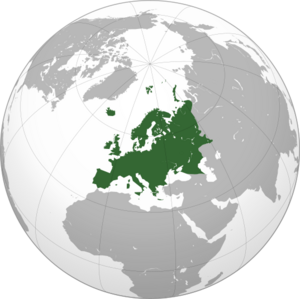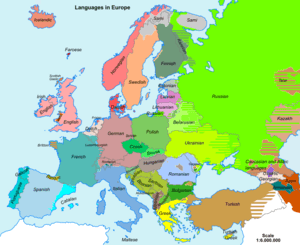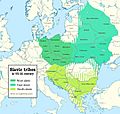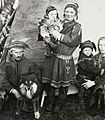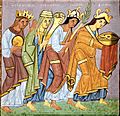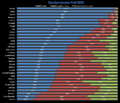People of Europe facts for kids
Europe is a huge continent, home to over 730 million people. It's a land of many different countries, cultures, and languages. The biggest countries by population are Russia and Germany. Russia has about 143 million people, though many live in the Asian part of the country. Germany has around 80 million people. On the other hand, some countries are very small! The Vatican City has only about 1,000 residents. Other tiny nations include Monaco, San Marino, and Liechtenstein.
Religions in Europe
Christianity is the main religion in Europe. Most countries have a majority of people who follow Christianity. This includes different branches like Roman Catholic, Protestant, and Orthodox. Roman Catholics are mostly found in southern and central Europe, and in Ireland. Protestant groups are common in the UK, Germany, and parts of central Europe. Orthodox Christians live mainly in eastern and south-eastern Europe.
There are also other religions. Many Jewish people live in the UK and France. In the past, many also lived in Poland, Germany, and central Europe. Countries like Turkey, Albania, Kosovo, and Azerbaijan have mostly Muslim populations. Large numbers of Muslims also live in Bosnia Herzegovina and Russia. Some countries, such as the Czech Republic, Estonia, and the United Kingdom, have many people who do not follow any religion.
Languages of Europe
Over 100 languages are spoken in Europe today. Many more languages were spoken long ago. The [[../EU|European Union]] has 24 official languages. This is interesting because there are 28 countries in the EU! Some languages are official in more than one country.
For example, English is spoken in the United Kingdom, Ireland, and Malta. German is an official language in Germany, Austria, and parts of Belgium. French is spoken in France and Belgium. Russian is the main language in Russia. Many people also speak Russian in Ukraine, Belarus, and other countries that used to be part of the Soviet Union. Italian is spoken in Italy and also in parts of Slovenia and Croatia.
German is the most spoken native language in the European Union. However, English is spoken by more people as a second language than any other language in the EU. There are also many languages in Europe with very few native speakers. Examples include Manx and Kashubian.
Images for kids
-
Simplified model for the demographic history of Europeans during the Neolithic period and the introduction of agriculture.
-
The Great Migrations of Late Antiquity.
-
Map showing the distribution of Slavic tribes between the 7th–9th centuries AD.
-
Europa Regina (Representation of Europe printed by Sebastian Munster (1570).
-
Ethnographic map of Europe, The Times Atlas (1896).
-
Sámi family in Lapland of Finland, 1936.
See also
 In Spanish: Etnias de Europa para niños
In Spanish: Etnias de Europa para niños


